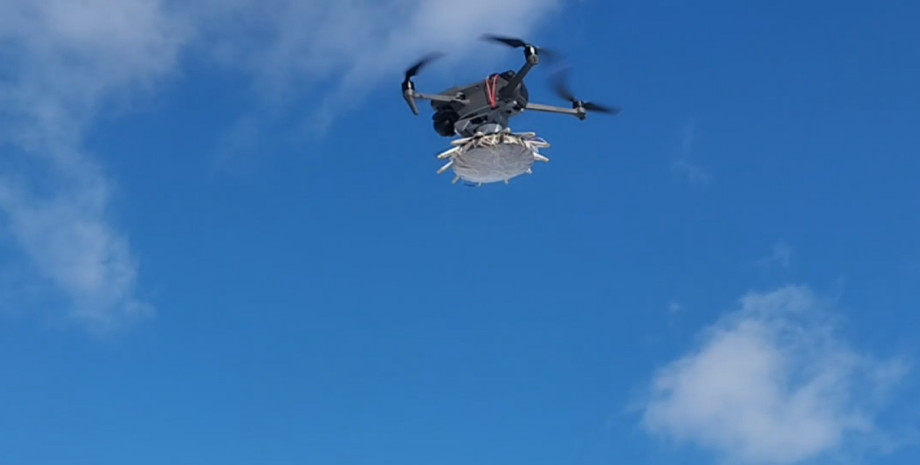
Judging by the invaders of the video, these UAVs fly to others from above and throw a grid on them, which entangles the screws, leading to the fall of the drone. Some Russian sources also mention the name of one of the "reticulate" - "tarantul". It consists of a body and an aluminum "spider" - a block of 12 guides, under which a grid is composed. It is reported that the device can be installed on DJI Mavic 3, DJI Mavic 2, Autel EVO 2, UCO, and FPV-Aye. The stated mesh range is 2 meters.
The occupiers claim that Tarantul effectively shows themselves in battle. Some Russian Telegram channels also call for a separate UAV calculation under such devices. From these publications, journalists concluded that the "reticles" are not very common in the Russian army. At the same time, there is already a video of the use of nets against light drones of Mavic, FPV, as well as heavy UAV-bombers.
Dmitry, commander of a platoon of drones of the 1st assault battalion of the 92nd Brigade of the Armed Forces, said in a comment to the publication that he doubted the effectiveness of Russian "reticles". According to him, the chances of catching a drone with such a net are one a thousand. In addition, there is a threat to lose the drone with the "reticulum". "In two weeks, someone caught one drone and began to think that something could come out of it.
It is a futile and ineffective waste of time and drone. According to the publication, one of the Russian "military", which now advertises "reticulate", in November last year called this idea unpromising, emphasizing that the likelihood of meeting copter in the sky is quite low. If the drone with the "reticton" still noticed another drone, he needs to remain invisible to him, to catch the moment when the enemy will be suspended for a long time in one place, approach him, aim and shoot with a net.
The developer of automated fighters, known on Facebook as Paolo Lumiere, said in a comment to the publication that the "meters" is unlikely to become an effective weapon against maneuverable FPV diggers, but with some development they can be successfully applied against less mobile reconnaissance drones. He noted that mavic drones can also be victims of nets, as dynamics are some of the most "hanging" UAVs. "What is a grid? It is a larger area of lesions and smaller accuracy requirements.
Compared to a ball with small arms, the grid area is even more than a thousand times a meter-meter," the expert said. According to Paolo Lumiere, the Russians managed to achieve point success in the use of drones with nets, in particular due to systematic: they were able to organize a scheme of observation, detection and interception. In addition, the occupiers thought of making nets thinner and fastening tungsten weights to the ends to reduce air resistance.
He stressed that the first to come to this idea came to Ukrainians. "While we were denied and mocked, the enemy realized it," said Paolo Lumiere. Recall that in May, the Russian organization "Archangel's project" showed a drone DJI Mavic with a device that drops the grid to intercept unmanned aircraft. It was reported that the effective use of the device - from 2 to 4 meters.










All rights reserved IN-Ukraine.info - 2022